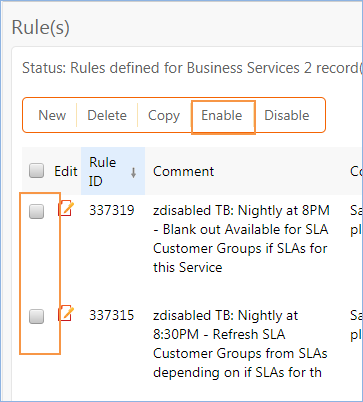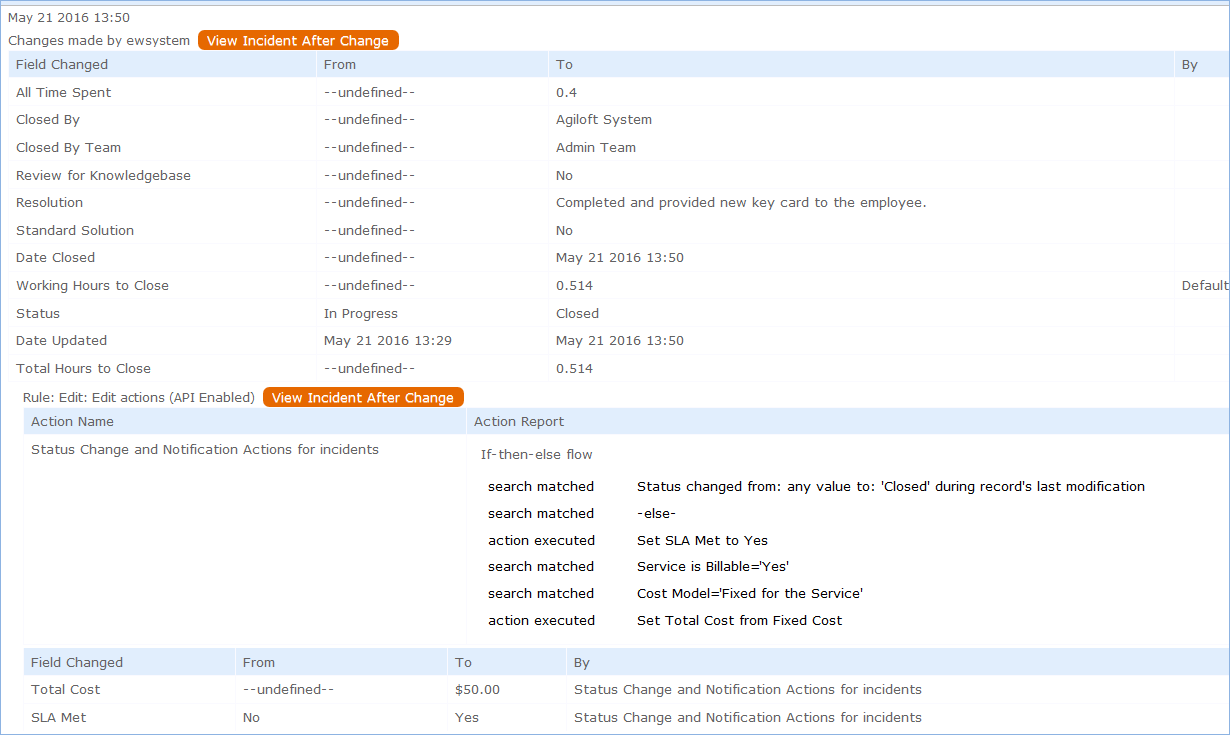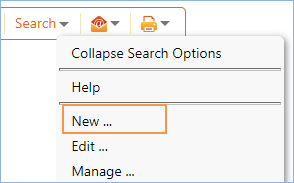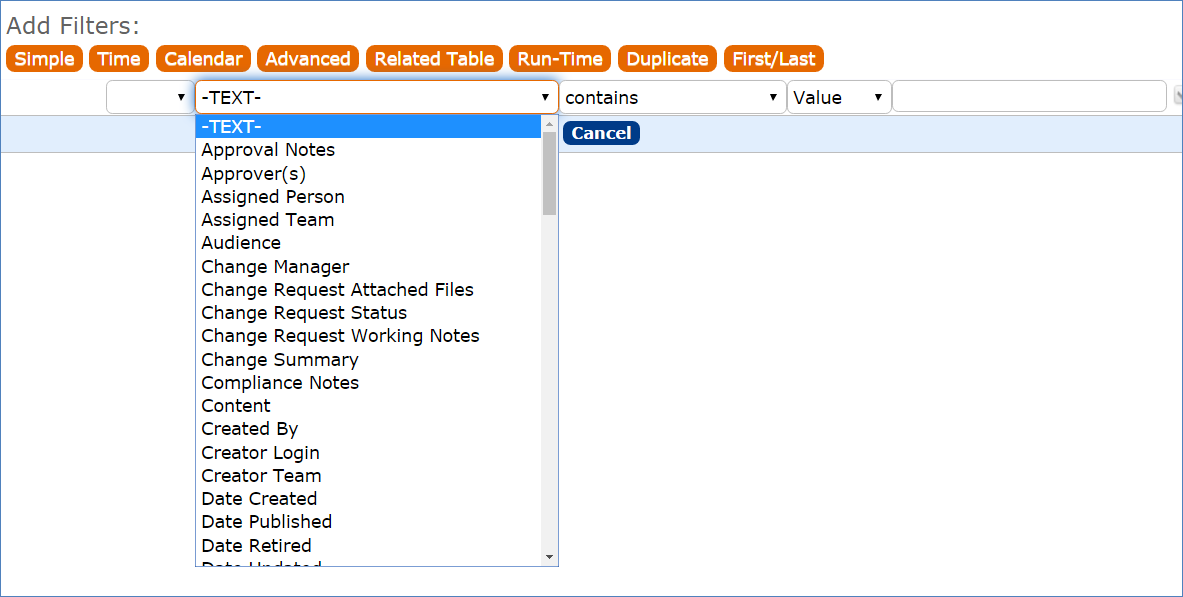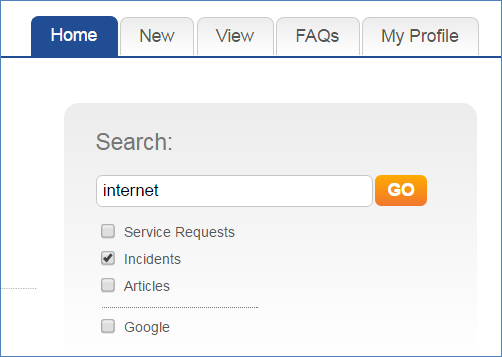This page describes a few key features of our ITIL system.
Which ITIL Standard do we
...
Use?
Our ITIL out-of-the-box system is based on the standards and terminology defined in the ITIL 2011 Edition library.
...
Control Active Functions with the ITIL Functions Table
| Anchor | ||||
|---|---|---|---|---|
|
To make it easy to hide or turn off certain features, we have added a table called ITIL Functions in the system. This table describes several functional areas in the system and provides an option to turn them on or off. Additionally, it stores notes about additional steps required to hide all the function's related tables and fields, and note for reactivating a disabled function.
If the Function Turned On value is No, then the fields related to that function are mostly hidden from users, while the rules that may run for that function will not meet the condition necessary for them to run. By default, most of the functions are on, with a few exceptions. You may however want to start with just a few functions on, and then add others once you have had some experience with the core functionality. For more details, view the ITIL Functions section.
Keep in mind that fields that are visibility controlled by the ITIL functions value will only be shown to a user if that user's group has view access to the relevant "ITIL Function turned on" field in that table.
Time Based Rules Need to be Enabled
The system comes with over 100 preconfigured time based rules that can run on any frequency, from every 5 minutes to every 10 years. These rules identify service requests or incidents that have gone past their SLA due dates, tasks that are coming due, and much more.
Since there are many parts of the system that a given customer may not use, we have disabled all these time based rules by default. As you configure each module of the program to go live, you will need to enable the rules that you want to use.
This is easily done from the table setup menu by going to the Rules tab. For instance, suppose you want to turn on time based rules for Business Services. Under the Business Services table in the left pane, click Setup Business Services.
...
In the table wizard, navigate to the Rules tab. Next, sort rules by the Comment field to find the time based rules that have a z in front of their name, indicating they have been disabled.
Select each rule you want to enable, then click the Enable button in the action bar. That will enable the rules so they start running. Update the name of the rule to remove the zdisabled text - you can also enable each one while editing the name by scrolling to the bottom of the first screen and setting rule is enabled to Yes, then saving the rule.
Security Controls
In general, group permissions control what each user can see and do in the system. A user may belong to more than one group to receive a superset of that group's permissions. For detailed documentation of our group permissions and how they work, click Group Permissions Help.
...
Designating Fields as Mandatory
| Anchor | ||||
|---|---|---|---|---|
|
Yes, any field may be made mandatory. It can be defined as always required, never required, or conditionally required based on the value in another choice-based field. This option appears within the field setup wizard, on the Options tab:.
Once fields have been designated as required, how this requirement is displayed is defined globally.
...
...
...
| Anchor | ||||
|---|---|---|---|---|
|
Any table in the system can be searched. For instance, you may want to find a particular incident, or all contracts of a certain type, or you may be looking for particular text content within an attached file. The The quick search block lets you complete ad hoc searches, and is used when you don’t anticipate running the same search again.
Saved searches let you run the same search repeatedly and is are typically reserved used for searches you will need routinely. Saved searches have the added benefit of accepting more complex search criteria and offer more granular search results.
...
Quick searches are done from the search block above the table you wish to search. If the search block (screenshot below) is not visible, click the word Search on the action bar to expand the search block: .
Using the Search Block
...
To create a saved search, hover over the down arrow next to the search icon item in the action bar and select New.
This opens the saved search wizard, which has options for Simple filters (most commonly used), as well as more advanced options. Click Simple to add a filter:.
Just like the quick search above, simple filters let you search any field for a particular value. Again, selecting -TEXT- will search through all available fields within the current table. For more information on the other search types, please see our online tutorial here Saved Searches or the online training unit for searching.
Managing Saved Searches
Users in the Admin group, and those with permission to publish saved searches, see an Apply tab in the saved search wizard where they can decide which groups should have the search:
...
- Active makes the search appear on the Search drop-down:.
- Show in Left Paneadds the search to the left pane, indented below the Table name.
- Show in My Assigned adds the search to the My Assignedsection in the left pane.
...
In the end user interface home page, there is a search block that can be used to search tables to which the user has access. A general internal customer can search service requests, incidents, articles, or can use an integrated search Google:.
